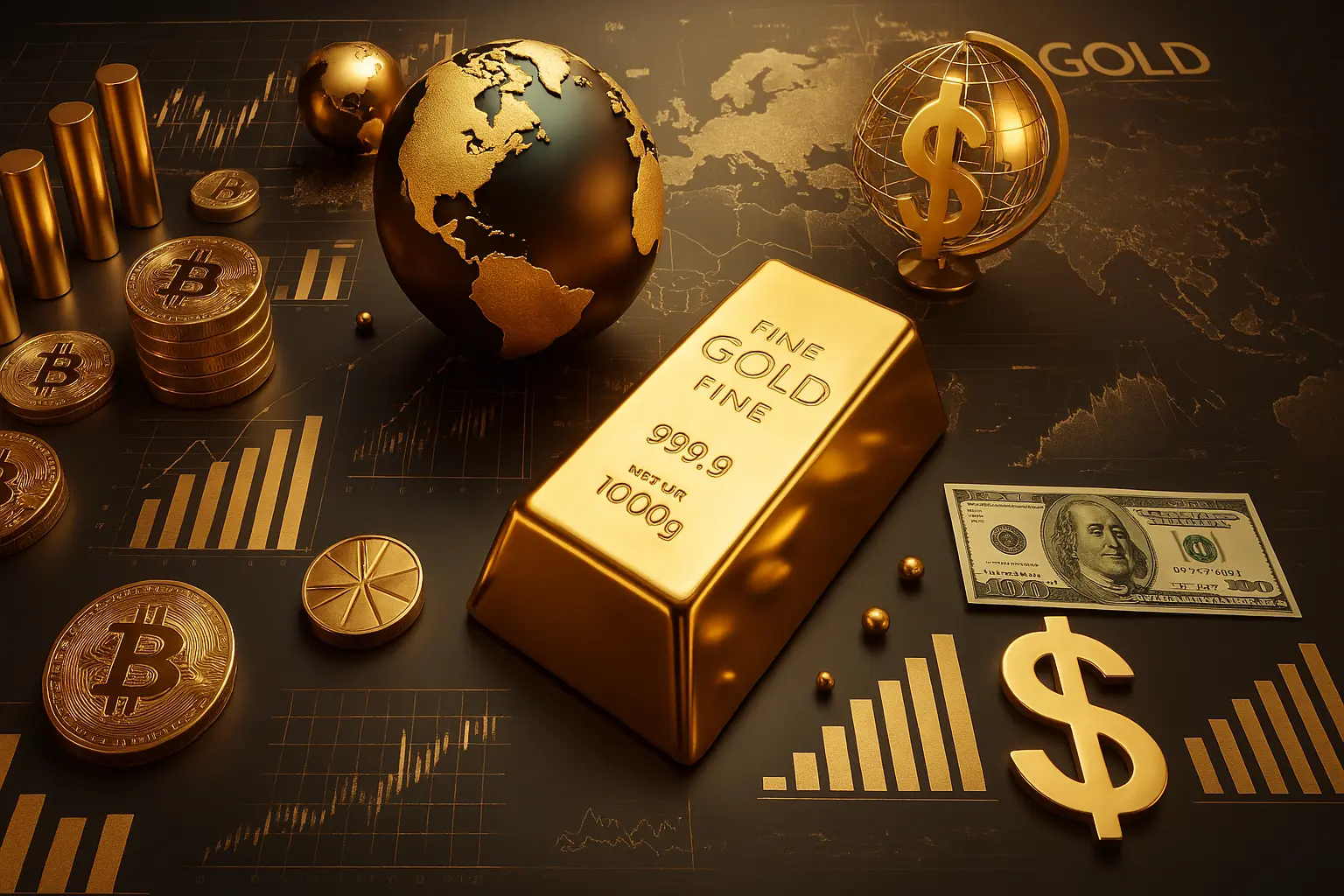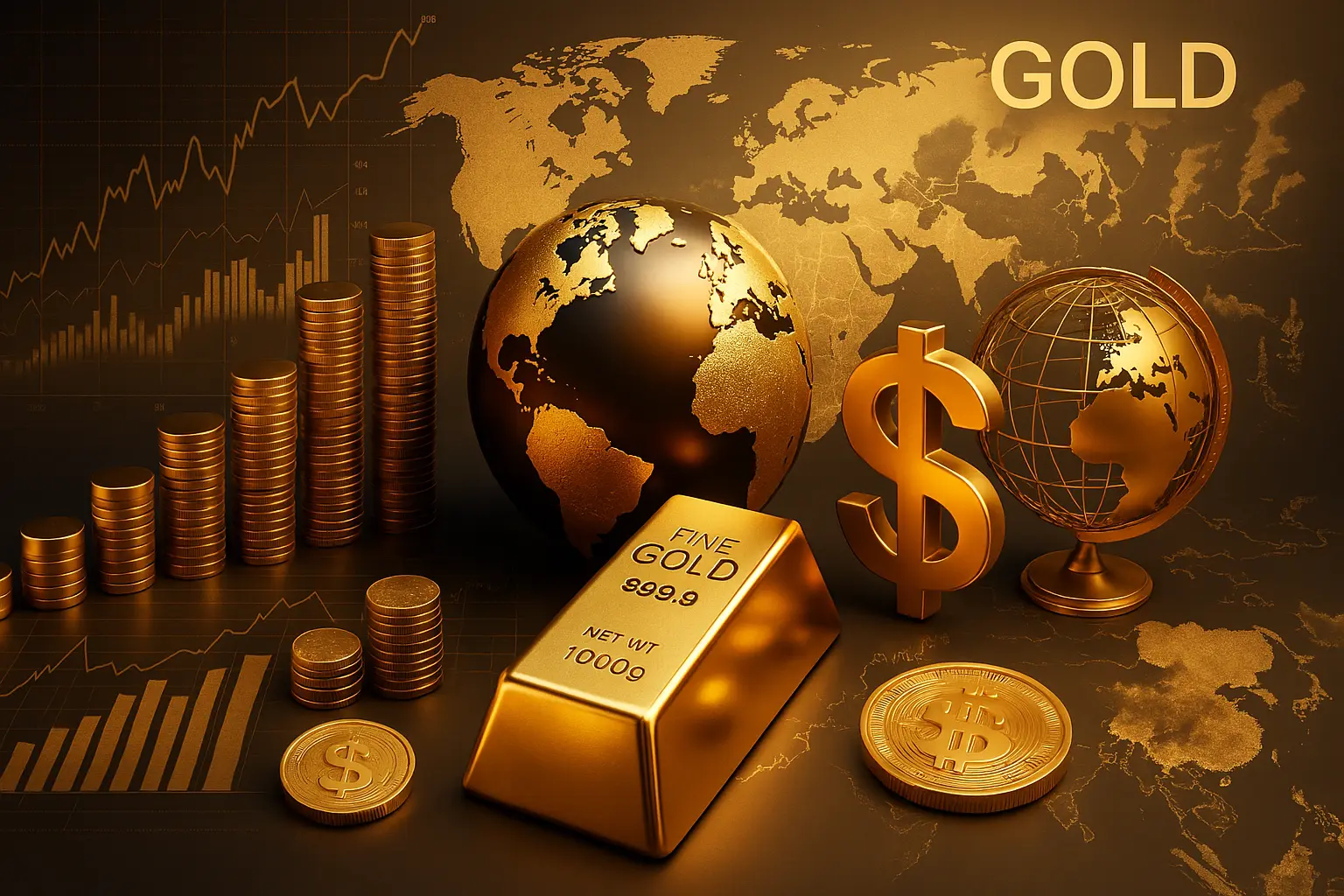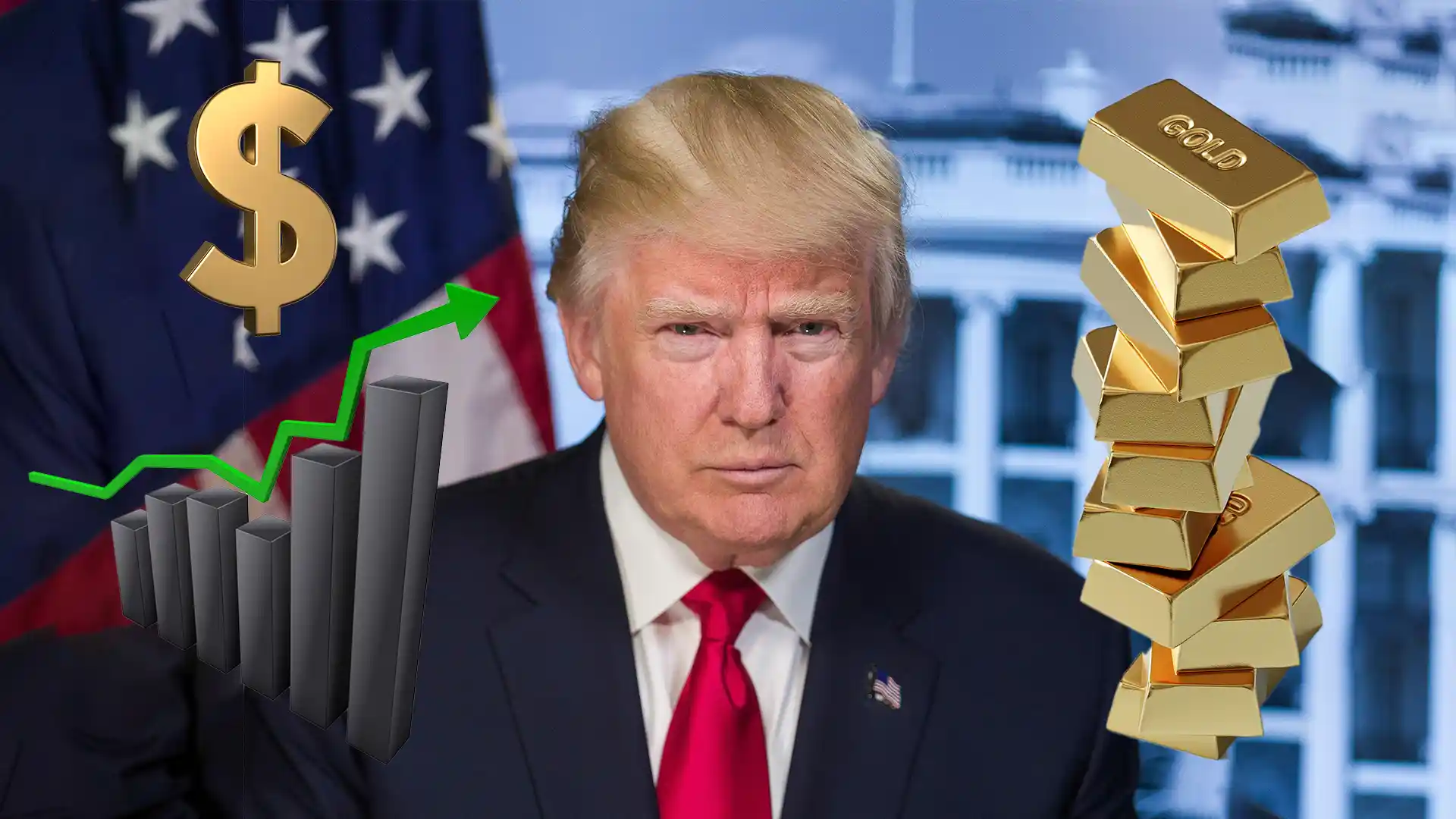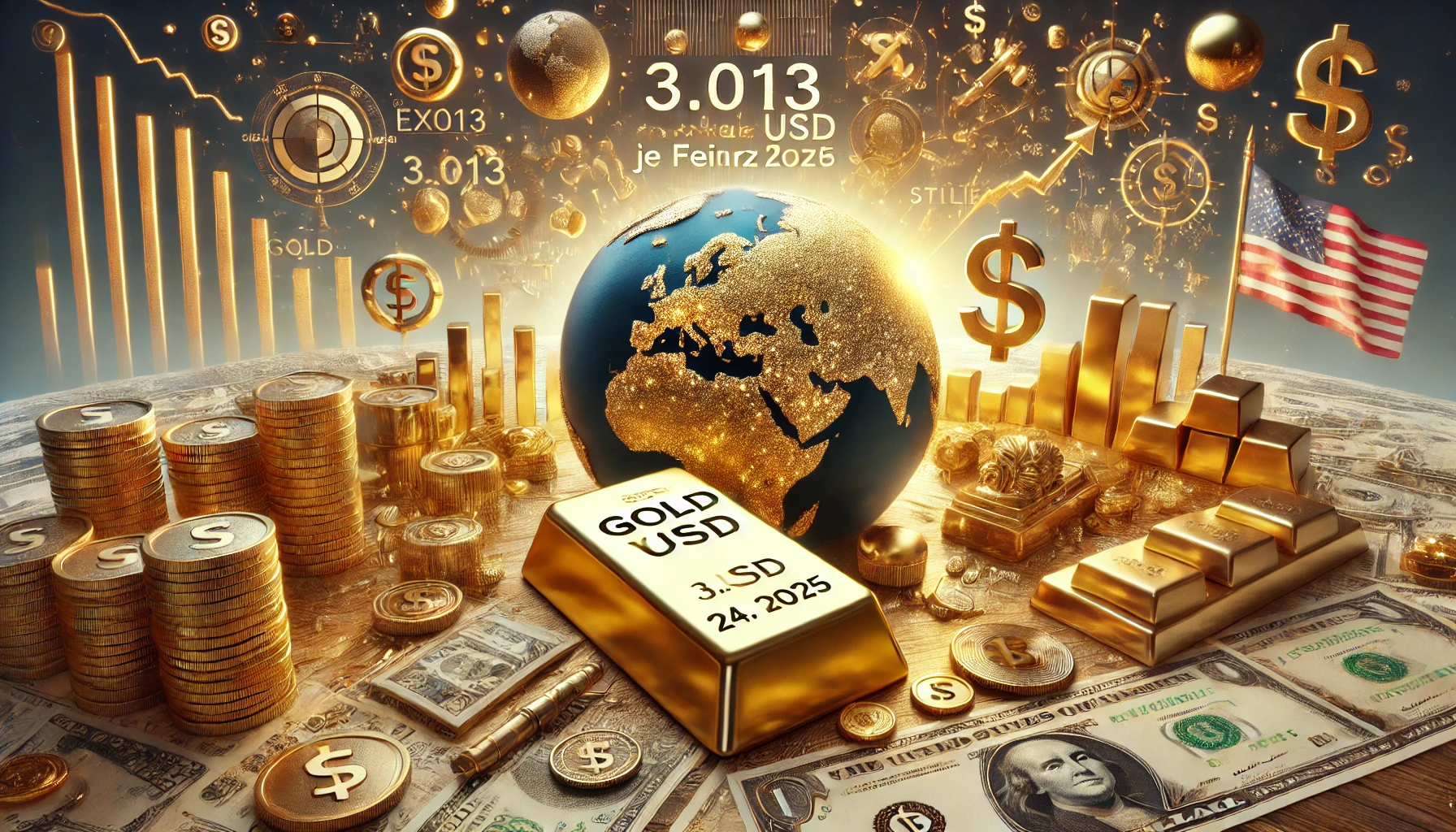Table of contents
Gold Price News: Sideways movement continues at USD 2,642
Dr. Mathias Kunze
Senior Consultant in Commercial and Tax Law
6 min.
Published on: 03.12.2024 | 22:58 UTC
Updated on:
04.12.2024 | 00:03 UTC

Today's gold price and important market developments from 03.12.2024 in the live ticker
Source: ChatGPT (OpenAI)
Stability dominates at USD 2,642 - Markets on hold
The price of gold remained unchanged at USD 2,642 per troy ounce today, December 3, 2024, continuing the sideways movement that has persisted for days. Market participants are observing a balance between buyers and sellers, which is reflected in the low volatility of recent trading days.
Demand for physical gold remains robust, particularly in Asian markets, which continue to record high consumer demand. At the same time, the lack of acute geopolitical or economic events appears to have slowed major market movements.
Current data suggests that investors are currently focusing on stability rather than short-term speculation. The gold market is thus proving resistant to minor fluctuations, which points to a temporary consolidation phase.
DAX reaches historic 20,000-point mark
Today, Germany's leading index, the DAX, passed the symbolic 20,000-point mark for the first time, which corresponds to a rise of around 3,000 points within a year. This remarkable rise is mainly driven by the expectation of falling key interest rates in the USA and the eurozone, which are stimulating stock markets worldwide.
At the same time, the price of gold remains in a stable sideways movement at USD 2,642 per troy ounce. Gold is traditionally regarded as a safe investment in times of economic uncertainty, while stock markets benefit from positive economic prospects. The current rise in the DAX indicates increased investor confidence in the economy, which could tend to reduce the attractiveness of gold.
However, geopolitical tensions and uncertainty about the sustainability of the equity boom could continue to support demand for gold as a hedge. Therefore, the impact of the DAX record high on the gold price remains ambivalent and depends on the further development of the global economy and politics.
Focus on interest rate policy: Market reactions to possible easing
Expectations of an easing of interest rate policy in the US have recently been driven by several disappointing economic data. In particular, weak labor market figures from November 2024, which show lower than expected growth in newly created jobs, have increased speculation. In addition, the latest economic indicators pointed to a possible slowdown in the US economy, including the decline in the manufacturing sector and the stagnating service sector.
Market observers are speculating that the Federal Reserve could signal a cautious adjustment to its monetary policy as early as December 2024. Although interest rates are no longer expected to be cut this year, a change in rhetoric in the Federal Reserve's official statements could indicate that interest rate cuts are being considered in the first half of 2025. Such a development would be particularly conceivable in an environment of declining inflation, which is currently close to the two percent target.
These developments are of particular interest to the gold market. Interest rate cuts could weaken the US dollar and thus increase the attractiveness of gold, as it becomes more competitive as an interest-free asset in an environment of lower interest rates. However, the price of gold is currently stuck in a sideways movement, as clear signals from the US Federal Reserve are still pending. The coming weeks could be decisive in determining whether expectations of an easing of monetary policy will drive the gold price upwards or whether other factors will gain the upper hand.
Current developments in Ukraine
On December 3, 2024, Ukraine will be at the center of significant diplomatic and military developments.
Peace talks and NATO membership
President Volodymyr Zelensky has signaled his willingness to enter into peace negotiations with Russia. Ukraine could renounce the reconquest of occupied territories if NATO membership is achieved for the remaining Ukrainian-controlled territories. This stance marks a departure from the previous position of reclaiming all occupied territories. At the same time, NATO Secretary General Mark Rutte emphasizes that the current focus is on strengthening Ukraine's military in order to put it in a better position for future negotiations.
International military aid
The USA has announced a new military aid package worth 725 million US dollars for Ukraine. This includes missiles, landmines and drone defense systems. The aim is to support the Ukrainian armed forces in the fight against the Russian offensive. In particular, the delivery of ammunition for the High Mobility Artillery Rocket System (HIMARS) should be mentioned, which indicates the possible provision of long-range missiles. This decision comes against a backdrop of uncertainty over future US support under the incoming Trump administration.
Geopolitical developments
The Russian-Ukrainian war has escalated into a global conflict involving soldiers from various nations such as North Korea, Yemen, Africa and Latin America. Russia is increasingly recruiting foreign soldiers to strengthen its front lines, particularly in view of possible political changes in the USA. At the same time, Ukraine and its allies are being supported by global supply chains such as artillery shells from South Korea.
EU support
During a symbolic visit to Kiev, the new EU chief diplomat Kaja Kallas reaffirmed the European Union's support for Ukraine. She did not rule out the deployment of a peacekeeping force and emphasized the need to support Ukraine in its fight against Russian aggression.
Luxembourg's concerns
Luxembourg's Foreign Minister Xavier Bettel has warned of the dangers of Ukraine joining NATO. In his view, such a step could further exacerbate tensions with Russia and escalate the conflict.
Gold market shows stability despite tensions in Ukraine
The current situation in Ukraine continues to have an impact on the geopolitical situation, which is fundamentally an important driver for the gold market. However, despite these uncertain circumstances, the gold price is currently moving sideways. This could indicate that investors are currently waiting to see how the geopolitical and economic conditions develop. Furthermore, both military and diplomatic support for Ukraine reduces the immediate risk of further escalation. At the same time, economic uncertainty remains, as the ongoing conflicts in the region could continue to weigh on the markets. In this situation, gold reflects a phase of restraint - a symbol of the current trade-off between hope and caution among investors.
Latest developments in Syria and the Middle East
Recent developments in Syria and the Middle East have significantly exacerbated geopolitical tensions. In Syria, Islamist rebels led by Haiat Tahrir al-Sham have surprisingly captured large parts of the city of Aleppo. This advance was largely unopposed by Syrian government forces. President Bashar al-Assad then announced a counter-offensive with the support of Russian airstrikes, in which numerous rebels have already been killed.
The ceasefire between Israel and Hezbollah in Lebanon remains fragile. Despite the official ceasefire, military incidents continue to destabilize the region. These ongoing conflicts have exacerbated the humanitarian crisis. Tens of thousands of people are on the run.
These geopolitical uncertainties also generally lead to increased demand for safe asset classes such as gold. However, even in the context of these geopolitical uncertainties, the gold market has shown remarkable stability, indicating a wait-and-see attitude on the part of investors. Despite the escalating conflicts in the Middle East and Syria, the price of gold remains in a narrow range, indicating that the markets have already priced in these risks or are waiting for further developments.
Surprising crisis situation in South Korea
Today, the President of South Korea, Yoon Suk Yeol, surprisingly declared martial law. He explained that he had to protect national security from threats from North Korea and “anti-state elements”. This decision met with considerable national and international resistance. The South Korean parliament reacted promptly and lifted martial law in a unanimous vote by 190 members present.
The United States expressed extreme concern about the situation and emphasized that it had not been informed in advance about the imposition of martial law. Germany and Russia also expressed alarm; the Kremlin described the situation in Seoul as “alarming”.
President Yoon justified his measure with the need to preserve state order and ward off threats from North Korea. Critics, on the other hand, accused him of undermining democracy and wanting to lead the country into a dictatorship. The opposition in parliament resolutely opposed the president's decision and pushed through the lifting of martial law, although traditionally only the president himself can end martial law.
The international community called for democratic principles to be upheld and advised foreigners to avoid political gatherings. The situation remains tense as North Korea and Russia have recently deepened their strategic partnership, which includes military support.
Although South Korea is not a direct driver of the gold price, the escalation of tensions on the Korean peninsula - especially with the involvement of North Korea and Russia - could influence market sentiment. The gold price could therefore increasingly serve as a barometer for uncertainty in Asia in the coming days.
Trump's planned dollar strategy and possible effects on the markets
US President-elect Donald Trump is planning to stimulate the domestic economy by weakening the US dollar. A weaker dollar would make US exports more competitive and improve the balance of trade. However, this plan is at odds with the role of the dollar as the global reserve currency. A deliberate devaluation could shake the confidence of international investors and lead to capital outflows. In addition, protectionist measures such as the threat of tariffs could exacerbate trade conflicts and destabilize the global economy. Such uncertainties typically increase demand for safe investments such as gold. The weakened dollar as a result of Trump's plans could therefore cause the price of gold to rise in the future. In these cases, investors would increasingly invest in gold to protect themselves against currency risks and inflation.
Technical analysis: Gold price trapped in a narrow range
The gold price continues to move sideways with today's gold price. Following the recent declines, the precious metal remains trapped in a narrow trading range between USD 2,620 and USD 2,666. This consolidation signals that the market is preparing for decisive impulses.
Technical indicators point to neutral market sentiment. The Relative Strength Index (RSI) is hovering around the 50 mark, signaling neither overbought nor oversold conditions. The Moving Average Convergence Divergence (MACD) shows a weak bias to the downside but remains close to the zero line, reflecting indecision among market participants.
Resistance areas remain at USD 2,666 and USD 2,685, although a break through these levels could allow a rise to the USD 2,725 mark. On the downside, support at USD 2,620 is critical; a break below this level could push the gold price towards USD 2,531.
The low volatility shows that buyers and sellers are currently balanced. However, external factors such as geopolitical tensions or surprising macroeconomic data could cause movement in the short term. Investors should keep a close eye on the next few days, as both upward and downward breakouts are possible.
Outlook: Gold price between sideways movement and possible impulses
In the coming days, the gold price is likely to remain in its established sideways movement, influenced by an interplay of geopolitical uncertainties and macroeconomic factors. While Donald Trump's government policy is causing volatility on the currency market, it remains unclear whether his planned weakening of the dollar will actually be implemented. However, should this happen, the gold price could benefit from its increased attractiveness as a hedge.
At the same time, the geopolitical situation remains a key driver: the escalations in Syria, the fragile ceasefire in the Middle East and the latest developments in Ukraine could fuel uncertainty in the short term, which could trigger increased demand for safe investments such as gold. The strategic partnerships between Russia and North Korea and the unstable situation in South Korea are also contributing to increased risk awareness on the markets.
On the economic side, the focus is on further signals from the US Federal Reserve. If the expectations of interest rate cuts are confirmed by new economic data or labor market figures, this could further strengthen gold's position as a safe haven. In Europe, on the other hand, weakening economic data points to an environment that could benefit gold in the medium to long term.
The chart continues to show strong support at USD 2,620 and resistance at USD 2,666. A breakout above these levels could inject fresh momentum into the market, while a fall below support would open up further downside potential. In the short term, however, the focus remains on the macroeconomic and geopolitical drivers.
The outlook remains fragile. Investors should be prepared for increased volatility, as external events can influence market performance at any time.
Dr. Mathias Kunze
Senior Consultant in Commercial and Tax Law
Blog

All-time high: Gold price breaks through USD 3,000 for the first time

Gold in industry: A detailed analysis of its interactions with halogens and in cyanide solutions







